How to Clean Countertops — 5 Expert-Approved Steps to Gleaming, Good-As-New Surfaces
Get your space in top form with these tips and tricks from cleaning professionals


Countertops occupy an abundance of space in a kitchen, so keeping them clean isn't just a practical necessity, it's an aesthetic one, too.
We've all been there, not being able to recall how many crumbs found their way around the toaster or how so much invisible dust accumulated on our kitchen countertops. And, we've all had to remove stains from our precious surfaces.
To help you whip your countertops into top form, I talked to professional cleaners about how to make them spotless. Whether your countertop of choice is marble, granite, or something else entirely, we have tips for you. Here they are.
What You'll Need
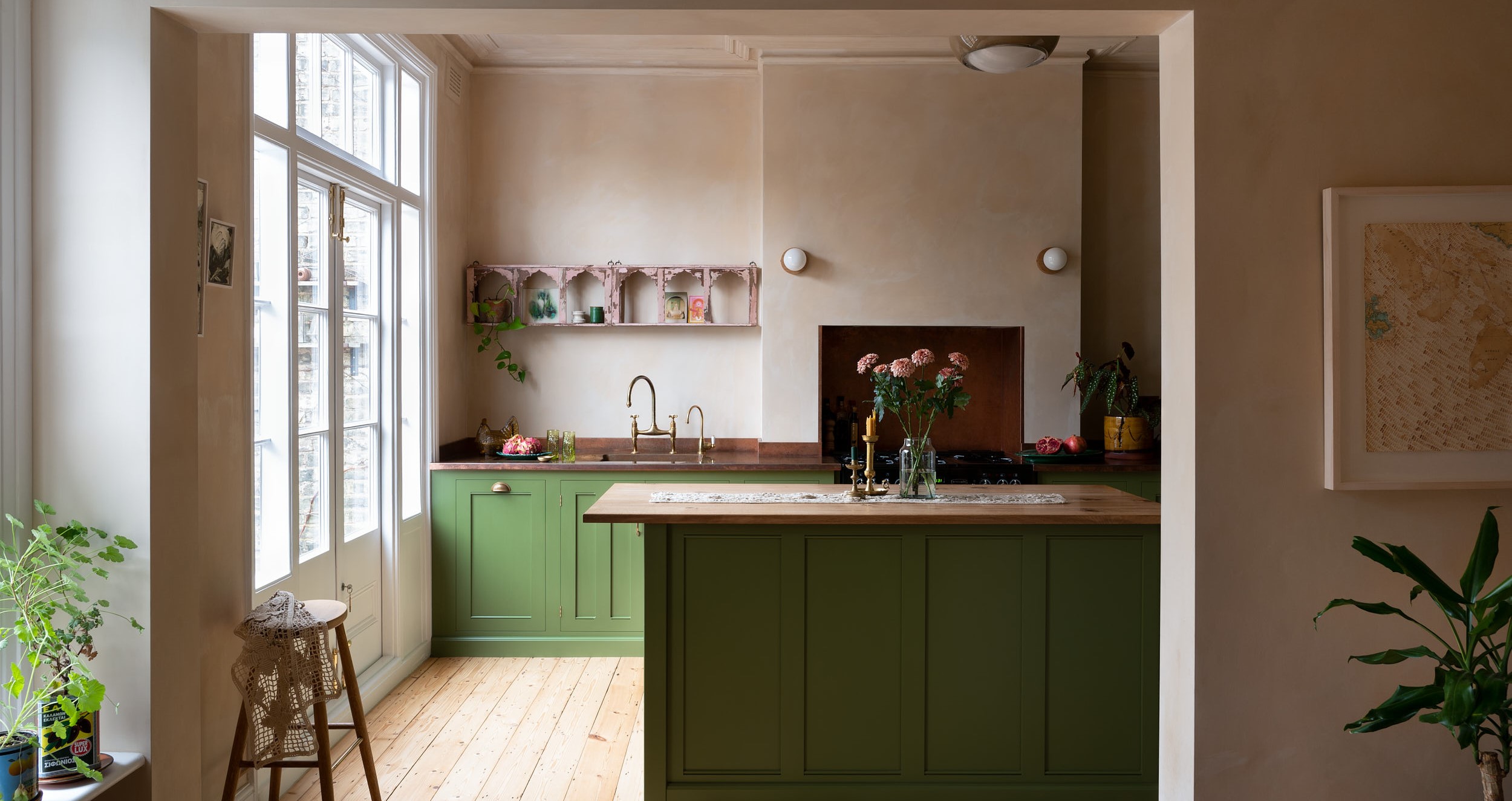
- A microfiber cloth. The MR.SIGA microfiber cleaning cloths from Walmart comes in a pack of 12.
- Baking soda. If it isn't already in your pantry, baking soda is available in many stores, such as the Good & Gather baking soda from Target.
- White vinegar. The Great Value distilled white vinegar 64 fl bottle from Walmart is a good choice.
- Mild dish soap. The seventh generation clean with purpose free & clear liquid dish soap from Walmart is plant-derived, containing no dyes or fragrances that could harm your countertops.
- A non-abrasive sponge. You can find soft sponges like the scotch-brite zero scratch scrub sponges and natural non-scratch scrubber sponge 3 pack at Target. These will ensure your surfaces on't get damaged during cleaning.
- Gloves. Use disposable gloves like the Great Value disposable vinyl gloves, 100 count from Walmart are optional while cleaning but recommended to keep cleaning products away from your skin.
- Hydrogen peroxide. The hydrogen peroxide topical solution USP 32oz from Target is a popular choice.
- Spray bottles. Picking up a couple of the great value all purpose plastic spray bottle 32oz from Walmart will only cost a few dollars
- Specialty cleaners. Finding specialty cleaners that match the material your counters are made from is crucial. Walmart has many, including the weiman 2-in 1 quartz and stone cleaner with UV protection, the formula 409 stone and steel cleaner, and the granite gold daily cleaner for granite, marble, quartz and more.
- A soft-bristle scrubbing brush. This is useful for cleaning any grouting. The OXO good grips all purpose scrub brush from Amazon will do the trick.
How to Clean Countertops
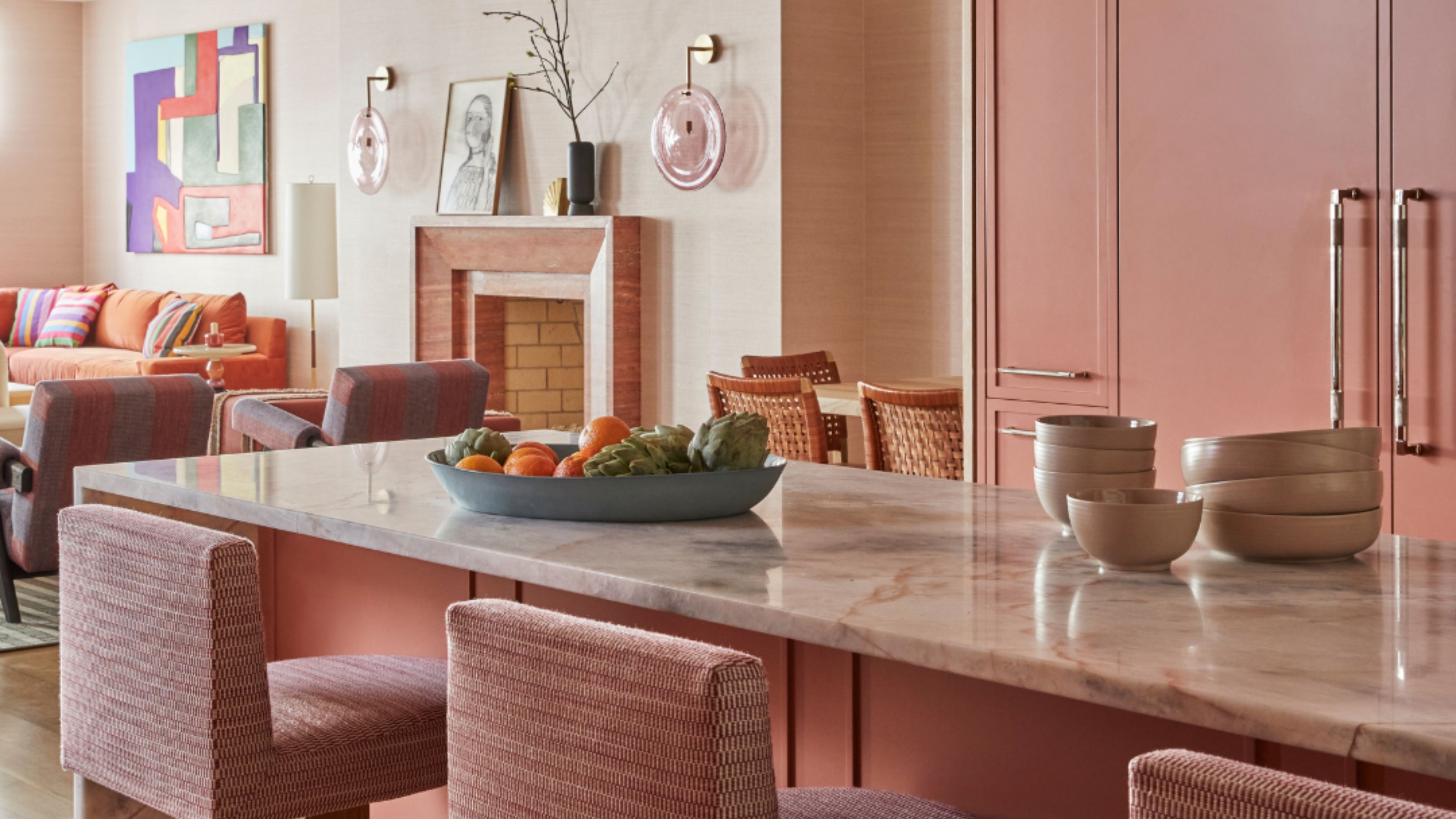
Whether you want to clean granite countertops or marble, Karina Toner, a professional cleaner at Spekless, has shared five simple steps to clean countertops correctly.
From there, Muffetta Krueger, owner of Muffetta's Housekeeping, then breaks down the specific cleaning and care needs of different countertop materials.
1. Clear off your countertop
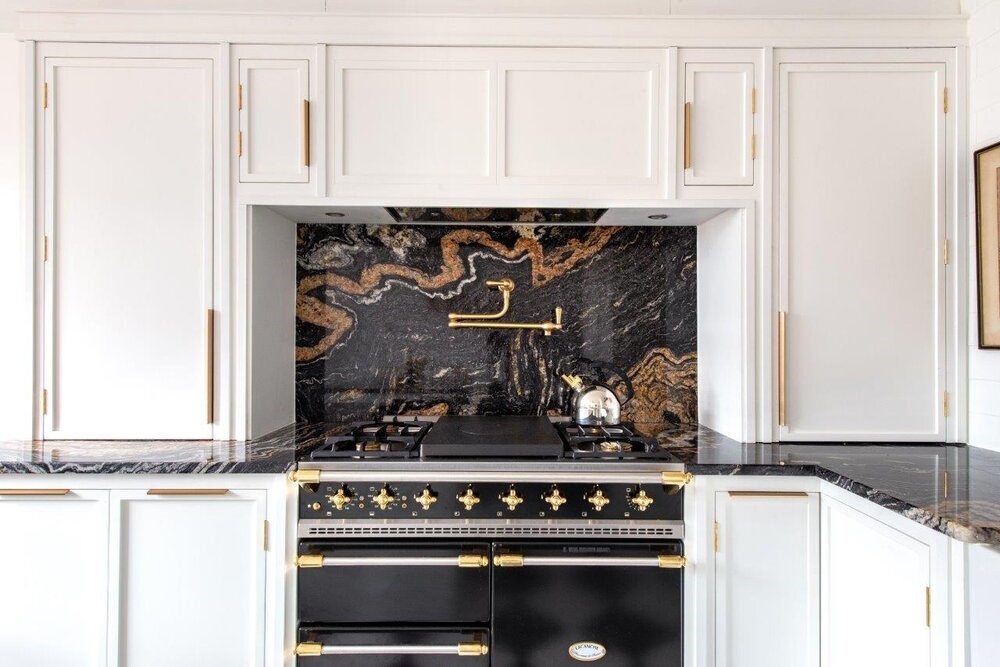
The most effective way to clean your countertops is to first take everything off of them. Cleaning around what's sitting on your counters may make them look more clean, but it isn't hygienic and any time you move something from the space it sat in, you'll only uncover more dirt. It's well worth taking a little extra time to ensure you clean everywhere by clearing off your counters at the very start.
"Removing items like countertop appliances, decorations, or utensils allows you to clean every inch of the countertop," says Karina.
The Livingetc newsletters are your inside source for what’s shaping interiors now - and what’s next. Discover trend forecasts, smart style ideas, and curated shopping inspiration that brings design to life. Subscribe today and stay ahead of the curve.
A good place to temporarily move your countertop items is onto your dining table: a large space where all of your countertop items can be grouped together, making for an easier job later on when it comes to putting items back where they belong.
2. Give your countertop an initial wipe down
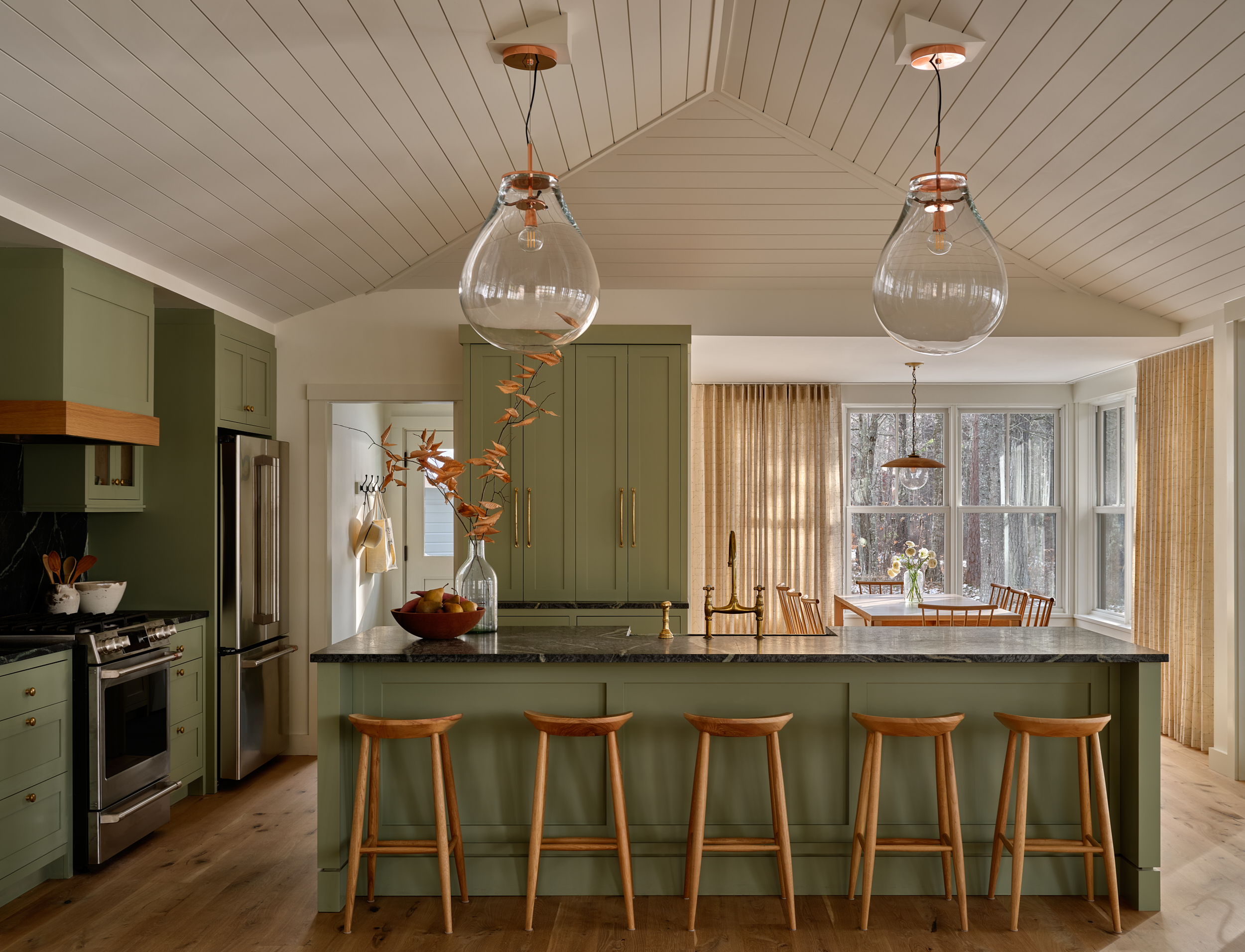
All sorts of dirt and grime accumulate on countertops, from food stains and dust to crumbs and sticky patches. So, once your kitchen countertops are clutter-free, the best place to start before busting out your cleaning supplies is to wipe over the surface with a dry cloth to remove crumbs and debris that might get in the way while you clean. When these are out of the equation, you can solely focus on the cleanliness of what's stuck to your surface instead of what's still sitting on the top.
"Start off by dusting over your countertops using a dry microfiber cloth," says Karina. "Doing this will remove loose debris, which is the easiest part of the cleaning process to tackle." After you have done this, you can move onto the second phase of your initial clean: doing the exact same thing except with a damp microfiber cloth. "Use a damp microfiber cloth and mild dish soap to wipe down the entire countertop," says Karina. Doing this should remove most of your countertop's everyday dirt, leaving behind only the more stubborn stains and problem areas.
Apply light pressure when wiping down your countertop with your microfiber cloth in circular or back-and-forth motions. If you spot a stain, you can rub at it a bit more vigorously to see if it will budge, but if it won't, instead, make a mental note to come back to it later. Don't worry at this stage, though; even the best material for a kitchen counter can and will gather stains. "Don't forget to rinse your cloth frequently to remove the dirt you're collecting from your countertops," says Karina.
3. Spot clean any tougher stains
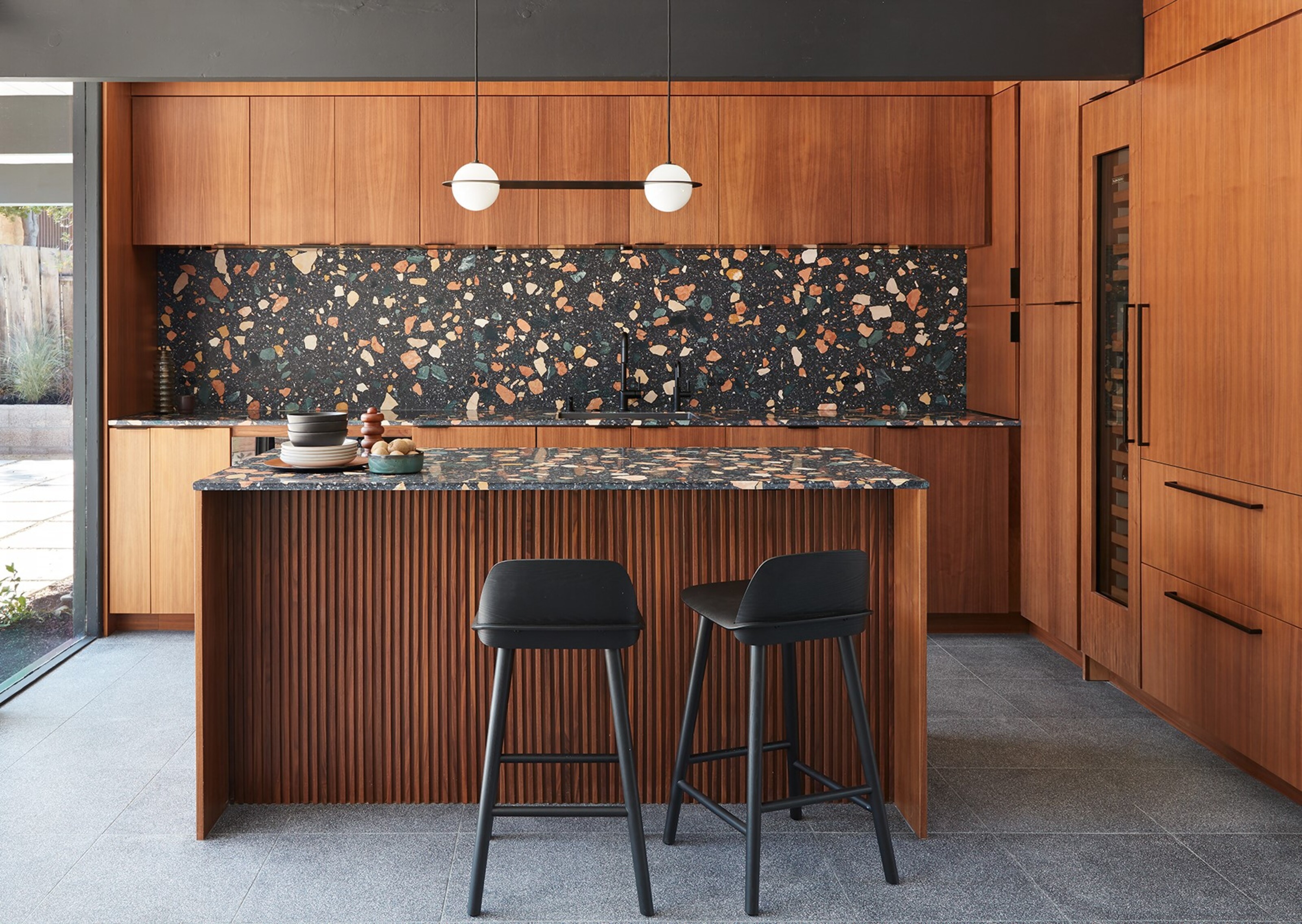
Once your countertops have undergone an initial clean, it's time to tackle the stains and spoils that wouldn't lift. It can be useful if you have some sort of idea about what the stain may be, but fortunately, there are universal spot-cleaning methods that will banish the vast majority of countertop stains.
Karina recommends using a baking soda-based paste to remove your stains, as baking soda is a natural ingredient that won't damage your surfaces like chemical cleaning solutions on the market might do. Remember, some chemical solutions can damage certain kitchen countertop materials.
"Stubborn spots on your countertops should ideally be removed as soon as possible, as otherwise they can lead to damage over time and discoloration," says Karina. "If you create a paste from baking powder and water mixed together and apply this onto your stains, it can help these stains to lift." Mix together two tablespoons of baking soda with enough water to form a paste-like consistency by adding a little at a time. Once you've formed your paste, add a smear of it onto any stains your countertop has gathered and allow the paste to sit on the stain for ten to fifteen minutes.
"Gently scrub the paste into the stain using a soft cloth after it's had a chance to sit for a while before finally wiping it off using a damp cloth," says Karina. Scrubbing the paste into the stain will help to remove it from your countertop, especially if the stain was sticky. Repeat this spot cleaning for any stains you find and if some still remain on your surface, try applying the paste again for longer.
4. Sanitize your countertop

A common mistake people make when cleaning their countertops is believing that wiping them down with cloths and chemicals is in itself disinfecting. However, in many cases, it isn't, so after you've finished cleaning your counters, it's important to sanitize them with a mild antibacterial surface spray.
Karina recommends making your own spray using equal parts vinegar and water, as vinegar contains little-known disinfecting properties and is a chemical-free alternative to a more traditional antibacterial surface spray.
"Sanitizing kills germs and bacteria, which is especially in food preparation areas like a kitchen," says Karina. "Spray an all-purpose cleaner or a 1:1 vinegar-water solution onto your countertops. Let it sit for five minutes before wiping clean, and then you're all set."
If your countertops are still damp after five minutes have passed, you can wipe them down with a paper towel to keep them dry.
Once your counters are all clean, your items can be returned to where they belong. Just be sure to check if any of them are dusty first and give them a wipe down with an antibactirial cleaning wipe if so, otherwise you'll be transferring dirt onto your freshly-cleaned counters. Now is also the ideal time to remove any items you shouldn't keep on your countertops if you want an uncluttered, minimalist kitchen, too.
5. Maintain material-conscious cleaning practices

Different countertop materials have different properties and, in turn, different needs. For instance, marble counters cannot be approached with harsh chemicals or water that is too hot, as marble is a porous stone.
To help inform you on what to do for your countertop material specifically, I asked Muffetta to break down the cleaning and care needs of the five most common countertops in people's homes:
- Granite: When cleaning granite countertops, use a pH-neutral cleaner to prevent etching; avoid acidic substances like vinegar. Seal it every 6-12 months to maintain its finish.
- Marble: Similar to granite but more porous; be extra cautious with acidic cleaners and abrasive scrubbing when removing stains from marble.
- Quartz: Avoid harsh chemicals like bleach. Use mild dish soap and water for everyday cleaning.
- Laminate: Avoid excessive moisture at seams; clean with a non-abrasive sponge and a gentle cleaner.
- Butcher block: Use mild soap and water; regularly oil the surface to prevent cracking and warping.
The GRANITE PLUS! 2 in 1 cleaner & sealer for granite, marble, travertine and limestone from Amazon is a good duo to have on hand. We also recommend the Thirteen Chefs mineral oil from Amazon as a great oil for taking care of your wooden countertops. It's an Amazon best seller.
FAQs
What is the hardest countertop material to clean?
According to Muffetta Krueger, owner of Muffetta's Housekeeping, marble countertops are the most difficult to clean.
"Marble is the hardest to clean and not one of the best countertops for cooking due to its porous nature and susceptibility to etching from acidic substances," says Muffetta.
Despite being harder to clean and maintain than other materials, marble countertops remain a highly popular choice in people's kitchens due to their stunning, sleek aesthetic. However, if you have children, it may become one of the kitchen surfaces that looks good but won't last long.
What can I do to protect my countertops?
There are many things you can do to protect the health and longevity of your countertops, including cleaning them the correct way, oiling them if necessary, and using PH-neutral or mild cleaning solutions.
Karina Toner, professional cleaner and operations manager at Spekless, further suggests using cutting boards on your surfaces to avoid scratches, placing coasters under all of your drinks to prevent the formation of water rings, cleaning up spills immediately so they are far less likely to stains, and applying a sealant to countertops made from porous materials like granite or marble. This sealant will act as a protective barrier, protecting the countertop's material underneath.
Cleaning up spills straight away is one of the best ways to have a low-maintenance kitchen countertop.

Ciéra is a writer and regional laureate with particular passions for art, design, philosophy and poetry. As well as contributing to Livingetc, she's an Editorial Assistant for Design Anthology UK and a contributing writer for magazines including Homes & Gardens, Apartment Therapy, Ideal Home, House Beautiful, Gardening Know How, The Sun, and Fabulous. Previous commendations of hers include being Highly Commended by The Royal Society of Literature and receiving a prestigious MA Magazine Journalism scholarship to City, University of London.